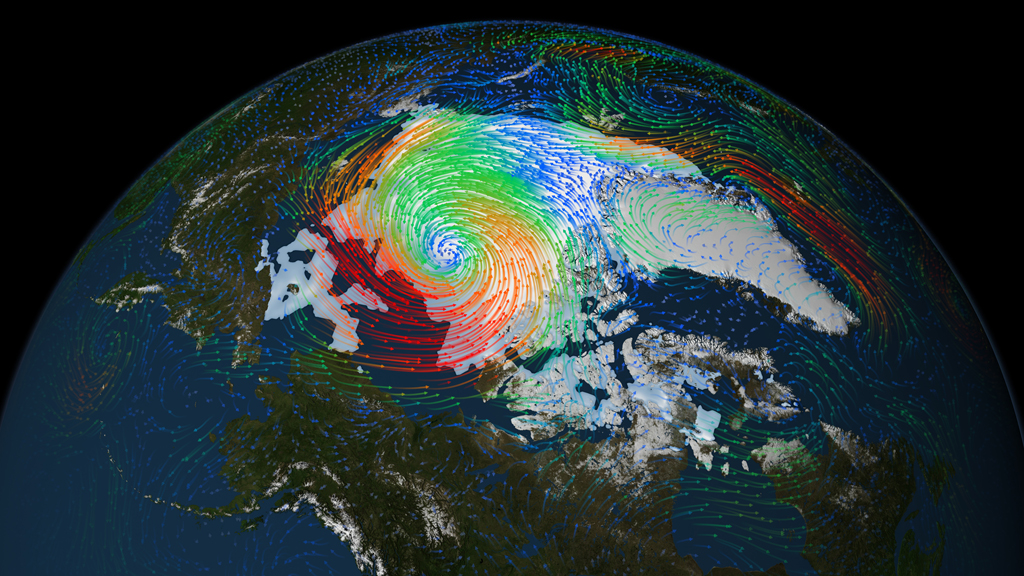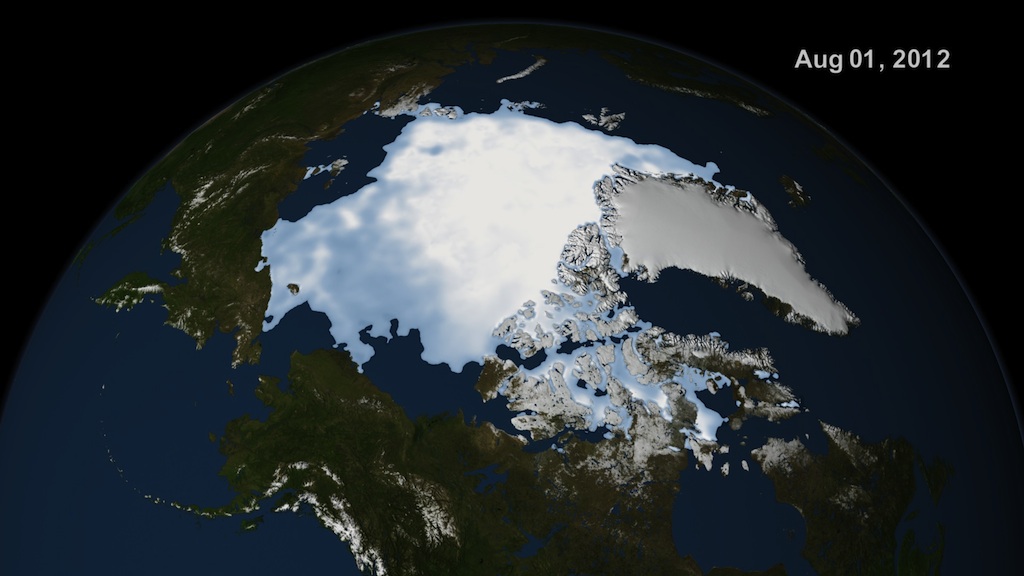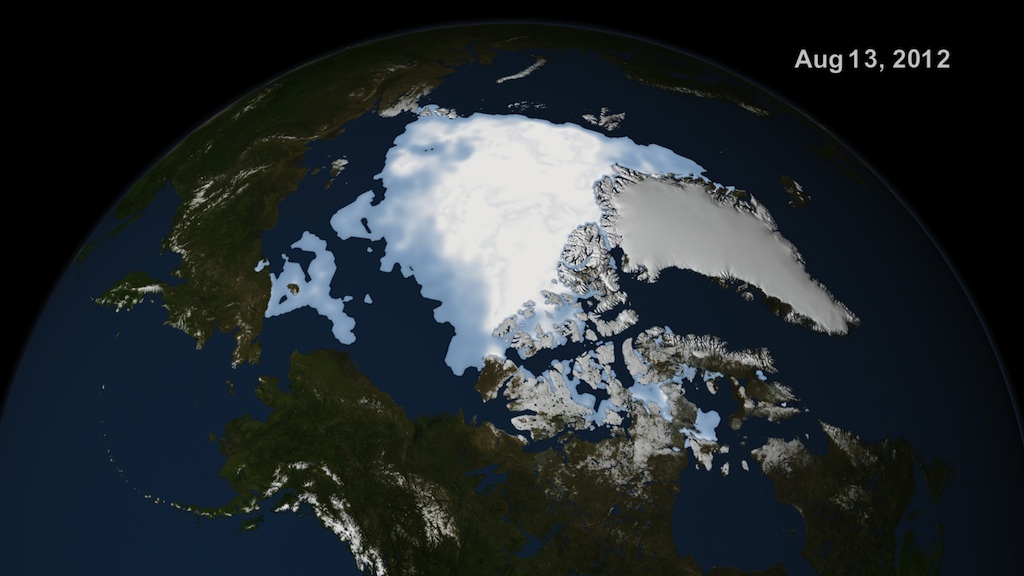Earth
ID: 11082

An unusually strong storm formed off the coast of Alaska on August 5, 2012, and pushed into the center of the Arctic Ocean. The spiraling cyclone was intense by Arctic summer standards, but it caught NASA scientists' attention for a different reason. As the storm raked over the floating sea ice, it severed an enormous chunk from the primary mass of the ice cap. Once separated the freed ice melted faster. This accelerated rate of ice loss might have contributed to the new record low that Arctic sea ice reached on September 16, 2012. Scientists said that while the storm itself wasn't extraordinary, the long-term weakening of the sea ice makes a storm of this size far more impactful than it would have been several decades ago. The visualization, based on wind and sea ice satellite data, shows how the storm parted the ice in its path.




Slicing And Dicing





Related Story
Story Credits
Visualizers/Animators:
Cindy Starr (Global Science and Technology, Inc.)
Greg Shirah (NASA/GSFC)
Horace Mitchell (NASA/GSFC)
Producer:
Jefferson Beck (USRA)
Lead Scientists:
Josefino Comiso (NASA/GSFC)
Robert Gersten (Wyle Information Systems)
Lead Writers:
Maria-Jose Vinas Garcia (Telophase)
Patrick Lynch (Wyle Information Systems)
Cindy Starr (Global Science and Technology, Inc.)
Greg Shirah (NASA/GSFC)
Horace Mitchell (NASA/GSFC)
Producer:
Jefferson Beck (USRA)
Lead Scientists:
Josefino Comiso (NASA/GSFC)
Robert Gersten (Wyle Information Systems)
Lead Writers:
Maria-Jose Vinas Garcia (Telophase)
Patrick Lynch (Wyle Information Systems)
Please give credit for this item to:
NASA's Goddard Space Flight Center
NASA's Goddard Space Flight Center
Short URL to share this page:
https://svs.gsfc.nasa.gov/11082
Keywords:
SVS >> App
NASA Science >> Earth
https://svs.gsfc.nasa.gov/11082
Keywords:
SVS >> App
NASA Science >> Earth








